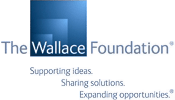Change and The Problem of Scale
Richard sent in a comment which should show up on the blog soon (I just got it for "approval"), but I wanted to "publish" it to make sure to share it with everyone. Here is what Richard wrote:
I do want to clarify that I wasn't necessarily offering these bullets as my own prescription of the specifics we should be employing, but as trends or buckets of work that I observe the field working on/talking about.
I do think that in a general, certainly less than concrete way, you're seeing a number of ingredients necessary to pursue what has described. That being said, it's pretty complicated in terms on the details and whether or not there should or could be coordination beyond local work, as Eric has been asking about, and how well the work can be done in a large scale.
-------------------------
Thanks, Richard, for the clarification. Here's the rub: The holy grail of reform/change is elusive. Once it appears to be "in motion" (note I did not say "working") everyone is in a huge hurry to "replicate" it, that is, in USDOE parlance "bring it to scale."....and that haste and optimism is always the undoing of any promising strategy, approach, experiment etc....especially in education, and especially American education.
To summarize (and if you want a list of books beside my own that reinforce what I'm about to say, let me know -- the authors include researchers/practitioners/professors Richard Elmore, John Goodlad, Seymour Sarason, David Tyack and Larry Cuban, - for starters):
To state what would seem obvious (but what is consistently ignored by the policy police, both public and private, who want to make sure their "investment" in change pays off by generalizing to everyone else on the planet), every classroom, every school, every district has it's own "culture", politics, (and education is always political), values, and ways of doing business. To assume that the ways your school figured out how to solve a problem, let's say providing arts education to every child in the school in a course of study that has scope and sequence throughout all the grades, to assume that your choices, solutions and experience will "transfer" (apply) to anyone else without a huge amount of adjustment, adaptation and revision (if not overhauling), is simply vain. My experience with the six school district members of the League of Cities for the Arts in Education (JDR 3rd Fund enterprise) taught me and everyone else engaged some rich lessons.
All you can reasonably expect is that, with enough instances of "success" (and that's another challenge - by whose definition?), you can in fact generalize some of the fundamental beliefs, strategies, and criteria for constructing your own version of a solution to say, the arts education problem I just described above. You cannot prescribe uniform change in our idiosyncratic school systems with wildly different socio-economic characteristics and understandings of the arts as education.
So, bringing invention to scale works in factories, engineering and to some degree in those countries that have a national curriculum (though the implementation of that curriculum is always influenced by those who teach).
We're back to one school at a time, I'm afraid, and the point is to accept that and then try to figure out what the essential characteristics and strategies for change are required to allow us to make some suggestions about creating a good process for making top notch arts education accessible to all kids.
We have a lot of work to do, not the least of which is coming to some kind of consensus on what is meant by quality teaching and learning in, through and about the arts. But, of course, that's where the rubber hits the road because there are so many variations of arts education, so many different sources of instruction, and so far, other than the NAEP assessment several years ago, no consensus on how to assess excellence.
I suspect that if we could get Bill Clinton and a bunch of his wonks together to address the challenge and come up with the money to do some long-range (5 to 10 years) research and development in strategic spots across the country, we might make some progress with this tantalizing question.
About
Our Bloggers
Sam Hope, executive director, The National Office for Arts Accreditation (NOAA);
Jack Lew, Global University Relations Manager for Art Talent at EA;
Laura Zakaras, RAND;
James Cuno, Director, Art Institute of Chicago;
Richard Kessler, Executive Director, Center for Arts Education;
Eric Booth, Actor;
Midori, Violinist;
Bau Graves, Executive director, Old Town School of Folk Music;
Kiff Gallagher, Founder & CEO of the Music National Service Initiative and MusicianCorps
Bennett Reimer, Founder of the Center for the Study of Education and the Musical Experience, author of A Philosophy of Music Education;
Edward Pauly, the director of research and evaluation at The Wallace Foundation;
Moy Eng, Program Director of the Performing Arts Program at The William and Flora Hewlett Foundation;
John Rockwell, critic;
Susan Sclafani, Managing Director, Chartwell Education Group;
Jane Remer, Author, Educator, Researcher
Michael Hinojosa, General Superintendent, Dallas Independent School District
Peter Sellars, director
Contact us Click here to send us an email... more
Peter Sellars on Creativity & the Voice more

3 Comments
Leave a comment